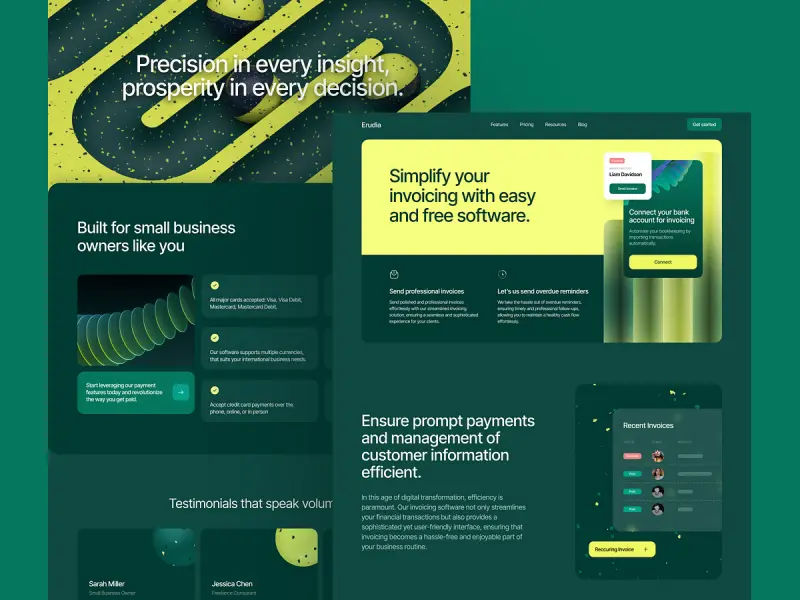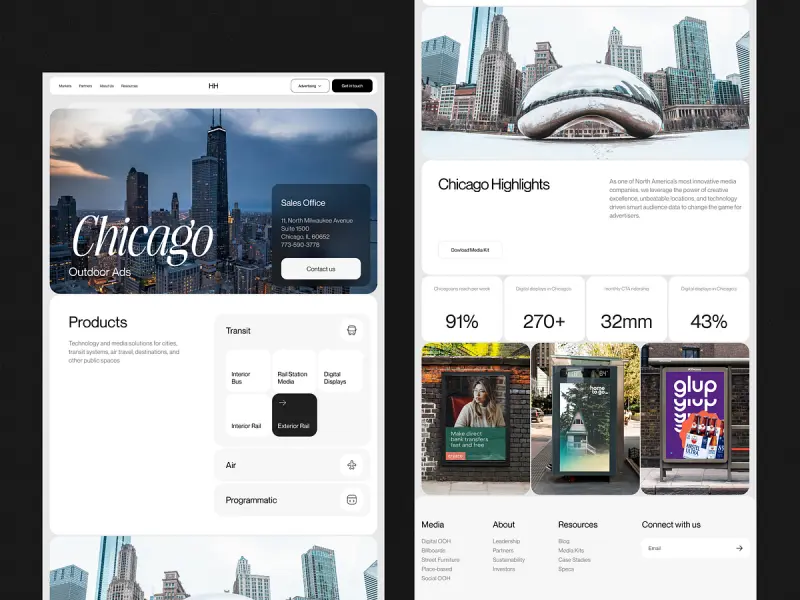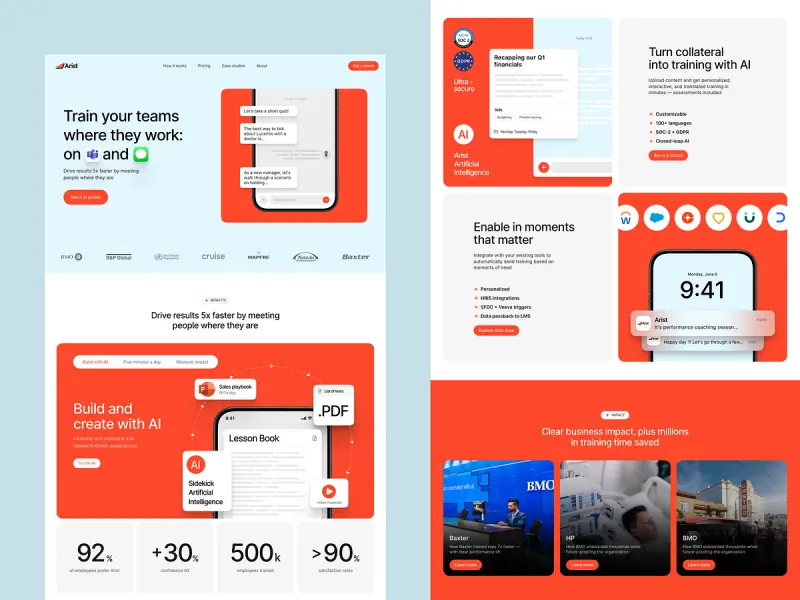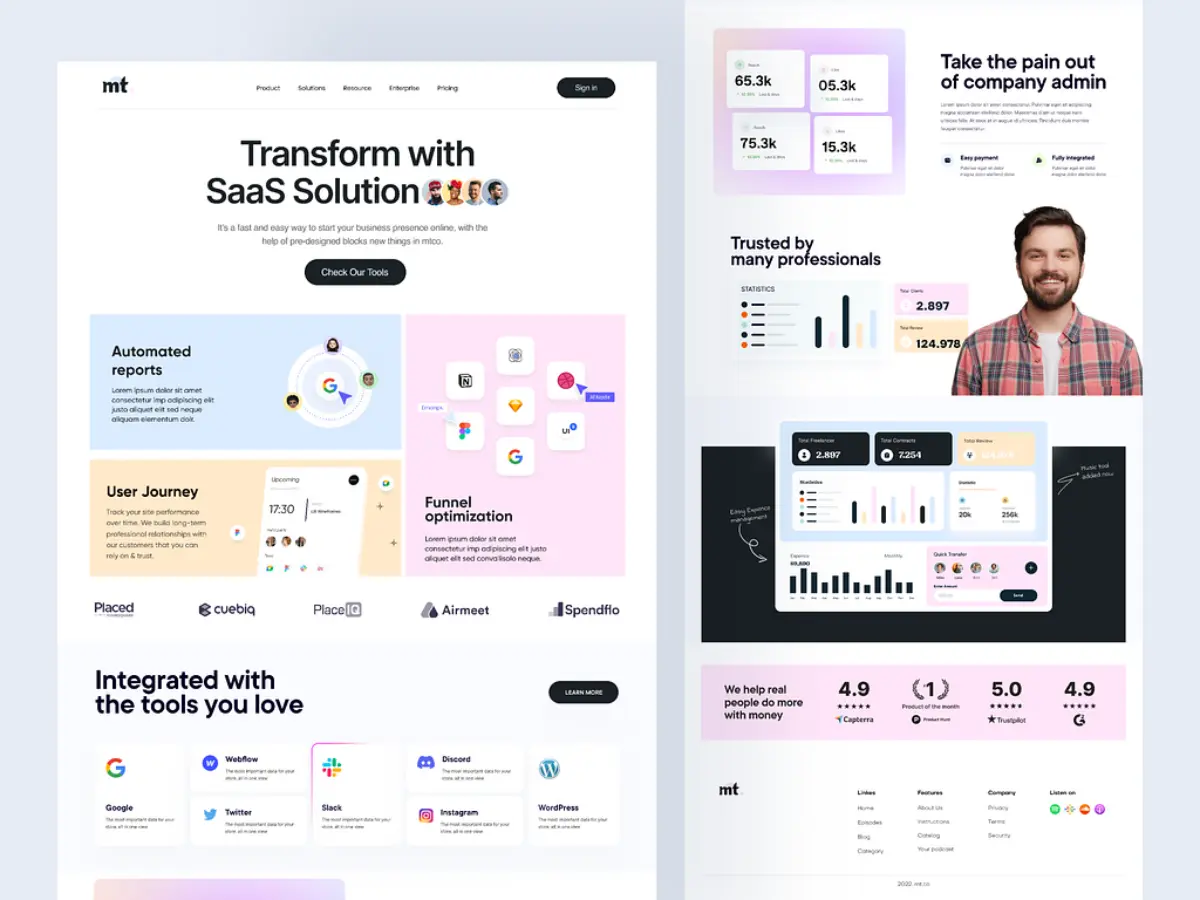The Only Guide About Web Development Life Cycle You’ll Ever Need
- TECHVIFY Team
- 0 Comments
The creation of every website adheres to a systematic process called the web development life cycle. This approach guarantees that the end product aligns with both user expectations and business objectives. A compelling statistic stands out at the core of this cycle: in 2022, the global market for web design services reached a valuation of USD 58.5 billion.
Experts predict a strong growth rate of 8.5% from 2023 to 2030. This forecast underscores the vital importance of effective web development strategies and highlights the sector’s significant role in the rapidly evolving digital landscape.
Through this blog, you will explore the intricacies of each phase in the web development life cycle. We’ll provide a comprehensive understanding of its complexities and essential elements.
I. Breakdown of the Web Development Life Cycle Definition
At its essence, the web development life cycle is a structured journey, a roadmap that guides developers and project managers from the initial concept to a fully operational digital presence. It’s about bridging the gap between the client’s vision and the end user’s needs, ensuring the final product connects with its audience while maintaining efficiency and effectiveness in its creation.
Life cycle of web development
Think of it like building a house. Without a blueprint, team, or plan, the process would be chaotic and the outcome uncertain. This is where the WDLC becomes essential, acting as the blueprint for developing and sustaining websites and web applications.
The WDLC is not a one-size-fits-all process; it’s as varied as the web itself. Whether crafting a simple webpage or designing a complex social network, this lifecycle adapts, ensuring each project receives a customized approach. It’s about transforming a kaleidoscope of ideas into a cohesive, well-functioning website.
Still want to see more Web Development articles? Check here:
II. Phases of Web Development Life Cycle
Step 1: Research & Requirement Gathering
The initial step in developing a website or web application involves comprehensive research and understanding the specific requirements. This phase lays the groundwork for the whole web development process.
Engaging with stakeholders is crucial for gathering detailed input about their expectations and the goals they wish to achieve through the web presence. This stage is essential for aligning the project’s vision with the practical needs and preferences of the target audience. A feasibility analysis is carried out to make sure the proposed solution is viable within budget, technology, and timeline constraints.
The insights gained here guide the development team in choosing the right technology stack and devising a project roadmap. This initial requirement gathering ensures that development remains focused, minimizing the need for significant changes later on.
It’s a collaborative effort that sets the stage for a successful project, ensuring every team member understands the scope and complexity of what’s to be developed. This meticulous approach to planning aids in creating a more effective and user-centric product.
Step 2: Strategy Planning
The next critical phase is strategy planning following the initial research and requirement gathering. It involves defining the project’s scope, setting achievable goals, and outlining the approach to meeting these objectives.
A well-crafted strategy considers the technical aspects, including the architecture and frameworks to be used. Project timelines and milestones are also established at this juncture, providing the team with a clear roadmap.
Risk assessment is a vital component in identifying potential challenges and devising mitigation strategies. This phase ensures that the web development life cycle proceeds smoothly, with a focus on efficiency and effectiveness.
Web development project life cycle
The planning stage is crucial for determining the web development cost, aiding in resource allocation and budget management. A thorough strategy planning phase sets a solid foundation for the project, guiding the team through subsequent stages of design, development, and testing.
It aligns the project’s objectives with business goals, ensuring the final product meets and exceeds stakeholders’ expectations. Careful planning leads to a successful project outcome, optimizing investment and maximizing the value delivered through the web solution.
Step 3: Design & Layout
Transitioning from strategy to creation, the design and layout phase brings visual concepts to life. Web designers craft the user interface, focusing on aesthetics, usability, and responsiveness. This stage translates project requirements into visual design mockups, refined through feedback loops with stakeholders.
User experience (UX) principles guide the design process, ensuring the site is intuitive and user-friendly. Color schemes, typography, and imagery are carefully selected to convey the brand’s identity and values effectively.
Web development tools play a crucial role in this phase, enabling designers to create high-fidelity prototypes that closely resemble the final product. These tools also allow for testing designs on various devices and screen sizes, ensuring compatibility and a seamless user experience across platforms.
Accessibility considerations are addressed to ensure usability for people with disabilities. This phase is collaborative, requiring ongoing communication between designers, developers, and stakeholders. This communication ensures the visual design aligns with technical capabilities and business goals. By the end of this phase, the project will have a clear, visually appealing design that is ready for development.
Looking to Outsource Development?
Contact TECHVIFY – Vietnam’s Leading Offshore Software Development & Outsourcing Company, for consultation and development services.
Step 4: Coding & Development
In the coding and development phase, the planned website begins to materialize. Developers set up the web application architecture, the blueprint of the system, outlining how components interact and function together to ensure scalability, reliability, and performance.
Front-end developers translate the design into code, using JavaScript, HTML, and CSS to make the website interface interactive and user-friendly. Back-end developers focus on database management, application integration, and server-side logic. Their work is pivotal in processing user inputs, storing data, and ensuring smooth website operation.
This phase often requires hiring specialized web app developers to handle complex functionalities like payment processing or user authentication. Throughout this stage, the development team collaborates closely, using version control systems to manage changes and the website is tested on various devices and browsers, ensuring responsiveness and accessibility for all users.
The coding and development phase is critical, turning conceptual and visual elements into a fully functioning website.
Step 5: Testing & Quality Assurance
Testing and Software Quality Assurance (SQA) are crucial phases in the web development process, ensuring that the final product is both functional and secure. This stage includes multiple checks and assessments to identify and fix any issues.
- Functional testing examines each feature to verify it works as intended.
- Usability testing assesses how intuitive and user-friendly the website is.
- Performance testing evaluates the website’s speed and responsiveness under various conditions, aiming to guarantee a smooth, efficient user experience.
- Security testing is paramount, focusing on web application security. This involves scanning for vulnerabilities like SQL injection or cross-site scripting (XSS). Ensuring user data security and protecting against breaches is essential for maintaining trust.
- Compatibility testing ensures the website functions correctly across different browsers, devices, and operating systems, maximizing accessibility to a broader audience.
- Accessibility testing checks compliance with standards like WCAG, making the web accessible to people with disabilities.
The testing and SQA phase is iterative, often revisiting development to address discovered issues. The goal is to refine the website until it meets all quality and security standards and delivers a reliable, secure, and user-friendly experience.
Step 6: Maintenance & Updates
Maintenance and updates are vital concluding phases in the web development life cycle, ensuring the website remains current, secure, and efficient over time. This ongoing process involves regular checks for issues, updates to content, and functionality improvements.
The team addresses any technical glitches to ensure smooth operation for all users. Regular updates keep the website aligned with the latest web standards and technologies.
Content must be refreshed to keep the site relevant and engaging for returning visitors, including updates to blog posts, news sections, and multimedia elements.
Implementing user feedback is critical. It enhances the user experience and adds new features based on demand. Security updates are swiftly applied to guard against new vulnerabilities and maintain the site’s integrity and trustworthiness.
The maintenance team also monitors website performance, making adjustments to improve speed and responsiveness. Analyzing traffic and user behavior provides insights for future updates and optimizations.
This ongoing cycle of assessment and enhancement keeps the website a dynamic and useful asset for its users. The commitment to regular maintenance and updates reflects the ongoing nature of the web development process.
III. Technologies in the Web Development Process
A wide array of technologies, including programming languages, libraries, frameworks, and development tools, are used to create highly functional websites and applications. Let’s explore the prominent technologies used in both front-end and back-end tech stacks:
Front-End Tech Stack
- HTML: Defines web page structure and content with features like semantic elements, media embedding, form validation, and offline storage.
- CSS: Controls visual presentation and layout, allowing customization of colors, fonts, spacing, animations, and responsive design.
- JavaScript: Enables interactivity, manipulation of HTML and CSS, event handling, animations, and building complex web applications. Popular frameworks like React, Angular, and Vue.js enhance front-end development.
- Front-End Frameworks and Libraries: Bootstrap, Foundation, and Material-UI provide pre-built components and stylesheets for rapid development, responsive grids, and consistent UI.
Web development example
Back-End Tech Stack
- Server-Side Languages: PHP, Python, Ruby, Java, and C# handle data processing, business logic, and database operations. They power CMSs, enterprise-level apps, and APIs.
- Database Management Systems (DBMS): MySQL, PostgreSQL, MongoDB, and Microsoft SQL Server efficiently store and retrieve data, ensuring robust management, scalability, and integration.
- Web Servers: Apache, Nginx, and Microsoft IIS handle client-server communication, processing requests, and serving web pages for seamless content delivery.
- API Development: REST and GraphQL facilitate creating APIs that facilitate smooth integration and interaction between diverse systems.
Conclusion
The web development life cycle is a comprehensive journey that transforms initial concepts into dynamic digital experiences. By adhering to each phase—from research and strategy to design, development, testing, and maintenance—businesses can ensure their websites are not only functional but also engaging and secure. With the global market for web design services continuing to grow, effective web development strategies are more important than ever.
Ready to bring your vision to life? Reach out to TECHVIFY for expert consultation and development services. We’re here to make your web dreams a reality!
TECHVIFY – Global AI & Software Solution Company
From Startups to Industry Leaders: TECHVIFY prioritizes results, not just deliverables. Accelerate your time to market and see ROI early with high-performing teams, AI (including GenAI) Software Solutions, and ODC (Offshore Development Center) services.
- Email: [email protected]
- Phone: (+84)24.77762.666








